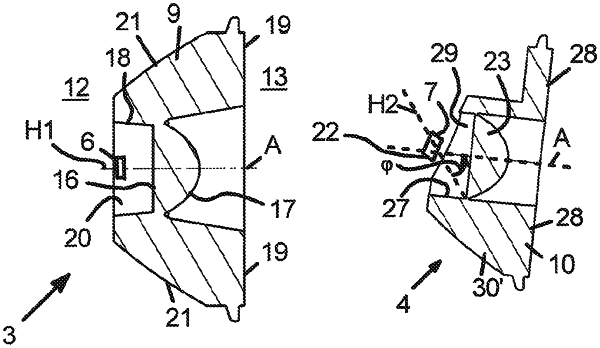| CPC F21S 41/365 (2018.01) [B60Q 1/068 (2013.01); B60Q 1/1423 (2013.01); F21W 2102/15 (2018.01)] | 14 Claims |

|
1. A lighting device for a vehicle, the lighting device comprising:
a light source;
an optical element associated with the light source and designed as a reflection lens, which, in a central region accommodating an optical axis of the optical element, has a lens section that has a first coupling-in surface on a coupling-in side and a first coupling-out surface on a coupling-out side,
wherein light coupled in at the first coupling-in surface is adapted to be guided directly to the first coupling-out surface, and which has, in an outer region, a reflection section that has a second coupling-in surface on an coupling-in side and a second coupling-out surface on a coupling-out side, wherein light coupled in at the second coupling-in surface is adapted to be guided to the second coupling-out surface via a reflection surface of the optical element,
wherein the light source is tilted with respect to an axis of rotation running substantially perpendicular to the optical axis and/or is arranged rotated about the optical axis in the plane running substantially perpendicular to the optical axis, with the formation of an obliquely running edge of the light source, and
wherein the first coupling-in surface, the second coupling-in surface, the reflection surface, the first coupling-out surface, and/or the second coupling-out surface of the optical element are shaped such that the predetermined light distribution is produced with imaging of the edge of the light source as a cut-off line.
|